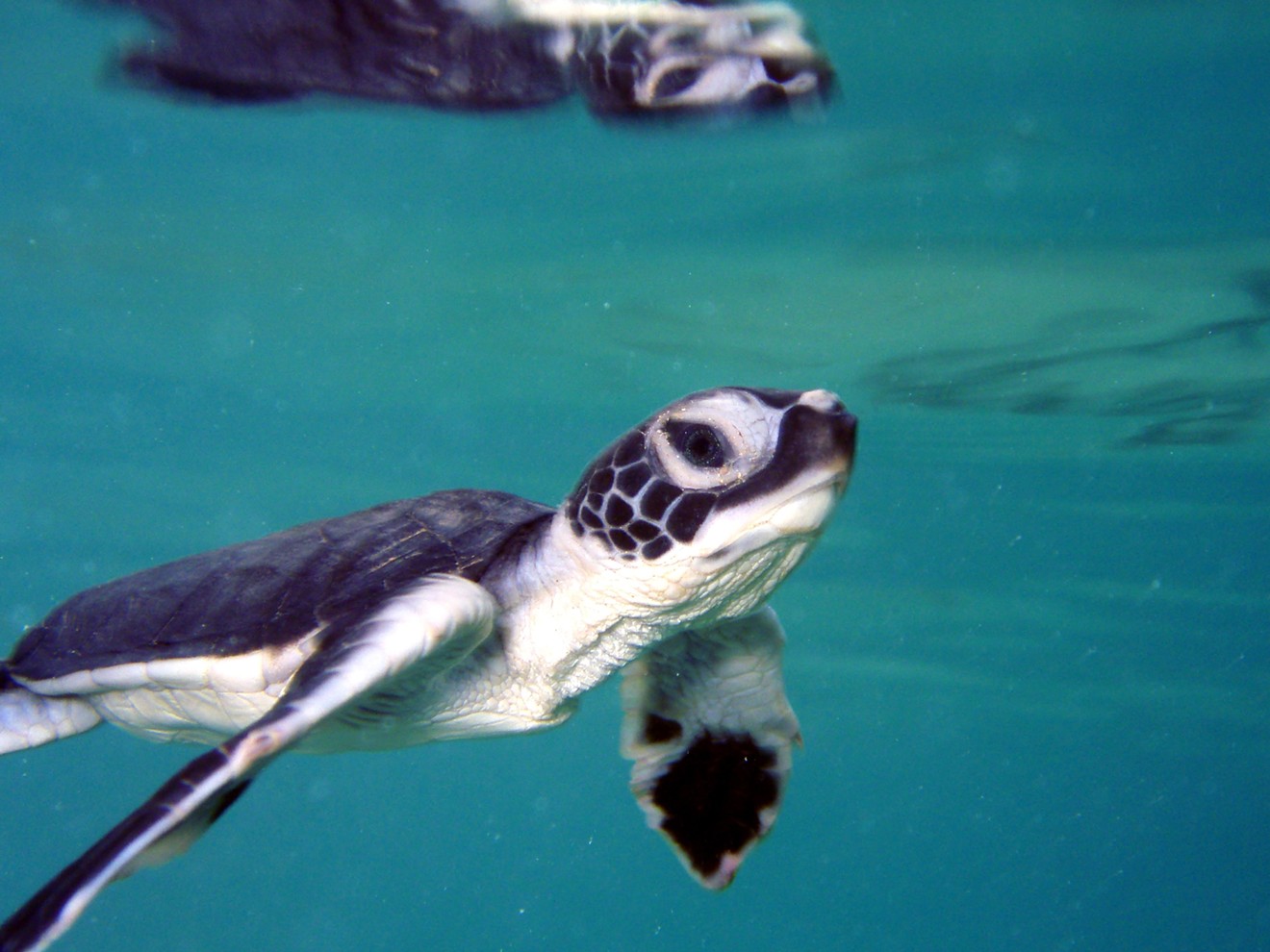Nearly 90 percent of all sea turtle nesting in the United States occurs on Florida beaches. Every summer, thousands of threatened and endangered sea turtles emerge from the water at night to lay their eggs in the sand. Two months later, hatchlings make their perilous journey to the water. If they survive to adulthood, females continue this ancient tradition and return to the same beach to nest.
The cycle is broken, however, if sea turtles think like their natal beach isn't safe. Female turtles will remain in the water if in jeopardy, which is why it's critically important to protect nesting beaches.
Last week, environmental organizations officially put the Trump administration on notice for violating the Endangered Species Act (ESA) and failing to protect green sea turtles. The Center for Biological Diversity, Sea Turtle Oversight Protection, and Turtle Island Restoration Network filed paperwork outlining their intention to file a lawsuit in 60 days unless the federal government designates critical habitat for the threatened species.
"The Trump administration's moral and legal attacks on our country's greatest achievements extend all the way to the gentle and defenseless sea turtles that are guaranteed protection under the Endangered Species Act," says Todd Steiner, executive director of the Turtle Island Restoration Network. "It is unconscionable."
Five species of sea turtle can be found in Florida: loggerheads, leatherbacks, Kemp's ridleys, hawksbills, and green sea turtles. All are listed and protected under the ESA.
Jaclyn Lopez, the Florida director of the Center for Biological Diversity, says species with federally protected critical habitat are more than twice as likely to recover than those without it. The ESA prohibits federal agencies from authorizing activities that will harm a critical habitat.
The law requires the designation of a new critical habitat whenever an animal's ESA listing is changed, but the federal government failed to appoint Florida's nesting beaches as critical habitat when the green sea turtles had their listing changed in 2016. The one-year grace period to do so ended more than two years ago.
Human activity threatens sea turtles in a number of ways. Real-estate development along the beaches can interrupt nesting season, and city lights can disorient newborns, according to the Sea Turtle Conservancy. Trash and food left behind by beachgoers can attract hatchling predators such as cats and raccoons. Sea turtles are also affected by the threats of algal blooms, an environmental threat that will worsen due to climate change. A total of 1,260 sea turtles were killed last year; 577 of those deaths were attributed to red tide. Sixty-four of them were green sea turtles.
Plastic pollution also threatens the survival of sea turtles. A 2018 study published in Global Change Biology showed plastic particles in the body of every one of the 102 sea turtles studied. Turtles have been found trapped in plastic bags and with plastic straws stuck up their noses. Hatchlings have even been found trapped in discarded plastic cups, impeding their journey to the ocean.
The entire green sea turtle population was first listed as threatened in 1978, and the breeding populations of Florida, the Pacific coast, and the Mexican Gulf were designated as endangered.
Some groups have recovered, while others remain in imminent peril due to overfishing, pollution, and sea-level rise. Though Pacific green sea turtles remain endangered, both north and south Atlantic green sea turtles have seen their numbers recover enough to be promoted from endangered to threatened on the ESA list.
"Atlantic green sea turtles were delisted from endangered to threatened because of a rebound in their numbers," Lopez says. "This is something to celebrate and evidence that, when fully implemented, the Endangered Species Act works and allows species to recover."
[
{
"name": "GPT - Billboard - Slot Inline - Content - Labeled - No Desktop",
"component": "16971022",
"insertPoint": "2",
"requiredCountToDisplay": "2"
},{
"name": "Editor Picks",
"component": "15769925",
"insertPoint": "4",
"requiredCountToDisplay": "1"
},{
"name": "Inline Links",
"component": "16575154",
"insertPoint": "8th",
"startingPoint": 8,
"requiredCountToDisplay": "7",
"maxInsertions": 25
},{
"name": "GPT - Rectangle 2x - Slot Auto-select - Labeled",
"component": "15782206",
"insertPoint": "8th",
"startingPoint": 8,
"requiredCountToDisplay": "7",
"maxInsertions": 25
},{
"name": "Inline Links",
"component": "16575154",
"insertPoint": "8th",
"startingPoint": 12,
"requiredCountToDisplay": "11",
"maxInsertions": 25
},{
"name": "GPT - Leaderboard to Tower - Slot Auto-select - Labeled",
"component": "15782207",
"insertPoint": "8th",
"startingPoint": 12,
"requiredCountToDisplay": "11",
"maxInsertions": 25
}
]











